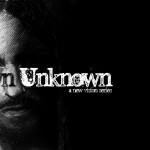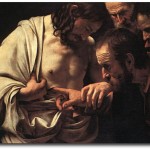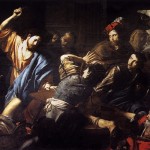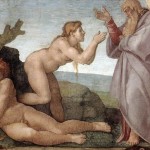This is part three in the series “When Jesus Gave Birth.” You can find the introduction to the series here and the second part here.
How can we deterimne with relative certainity that John wanted us to see in the piercing of Christ side and the flow of blood and water (John 19:34) as an allusion to the creation of Eve (Genesis 2:21-22)?
Richard Hays book Scriptural Echoes in the Letters of Paul offers what has become the standard for evaluating the likelihood of a biblical allusion. These seven criteria cause us to look outside our own biases to meet a level of objectivity that others can appreciate.
Here the seven criteria applied to our proposed allusion.
- Availability: was Genesis and specifically the creation account available to the author of John
- Volume: to what degree do “words, syntactical patterns, structure, and number of elements” correspond between Genesis 2:21-22 and John 19:34?
- Recurrence: To what extent is Genesis and more specifically the creation account used elsewhere in John?
- Thematic Coherence: Does the proposed reference to Genesis 2:21-22 enhance the themes developed in John?
- Historical Plausibility: Is it likely that John intended the reference and that his audience would have recognized it.
- History of Interpretation: Have other readers, both critical and pre-critical, recognized it?
- Satisfaction: does it make sense?
For this series I’m going to limit our discussion to two: Volume and Thematic Coherence. The fact that Genesis was available to John is beyond question and will be well established before this series is concluded.
As to why I’m not going to focus on the other criteria, seven may make Hay’s list feel complete but his inventory really boils down to Availability, Volume and Thematic Coherence. All the rest are really just degrees of these. For instance, examining recurrence (3), to what extent the creation account is used elsewhere in John, is just another way of demonstrating that Genesis was in the mind of John (1) and it was essential to his books thematic coherence (4). Exploring the allusion in the history interpretation (6) is just another way of showing how others saw the same verbal parallels (3) and matching of themes (4).
But John’s generic difference from Paul, the later of which Hays is specifically addressing, also requires us to make a slight extension to the list. The letters of Paul and the Gospel of John are clearly different in that Paul writes letters and John writes a story. John, therefore, is not limited in his allusions the way that Paul is limited to precise verbal similarities. Narrative allows the “evocation of other details – such as plot, characters and setting – by means of circumstantial correspondence.” Due to the availability and potential use of these other elements, allusions in narrative do not simply arise from the parallel use of exact words.
For instance, Jesus’ act of breathing on the disciples to receive the holy Spirit in John 20:22 is a well attested allusion to Genesis 2:7 – the creation of Adam. Jesus’ “breathing on” or “into” the disciples is clearly unique. The fact that Greek word is the exact one found in the LXX translation of Genesis is suggestive. But the allusion also coheres in that Jesus stands in place of God and the Holy Spirit the breath of life – characterization which are well established in the Gospel of John.
In my next post we’ll look at the verbal and circumstantial correspondence between John 19:34 and Genesis 2:21-22.



















